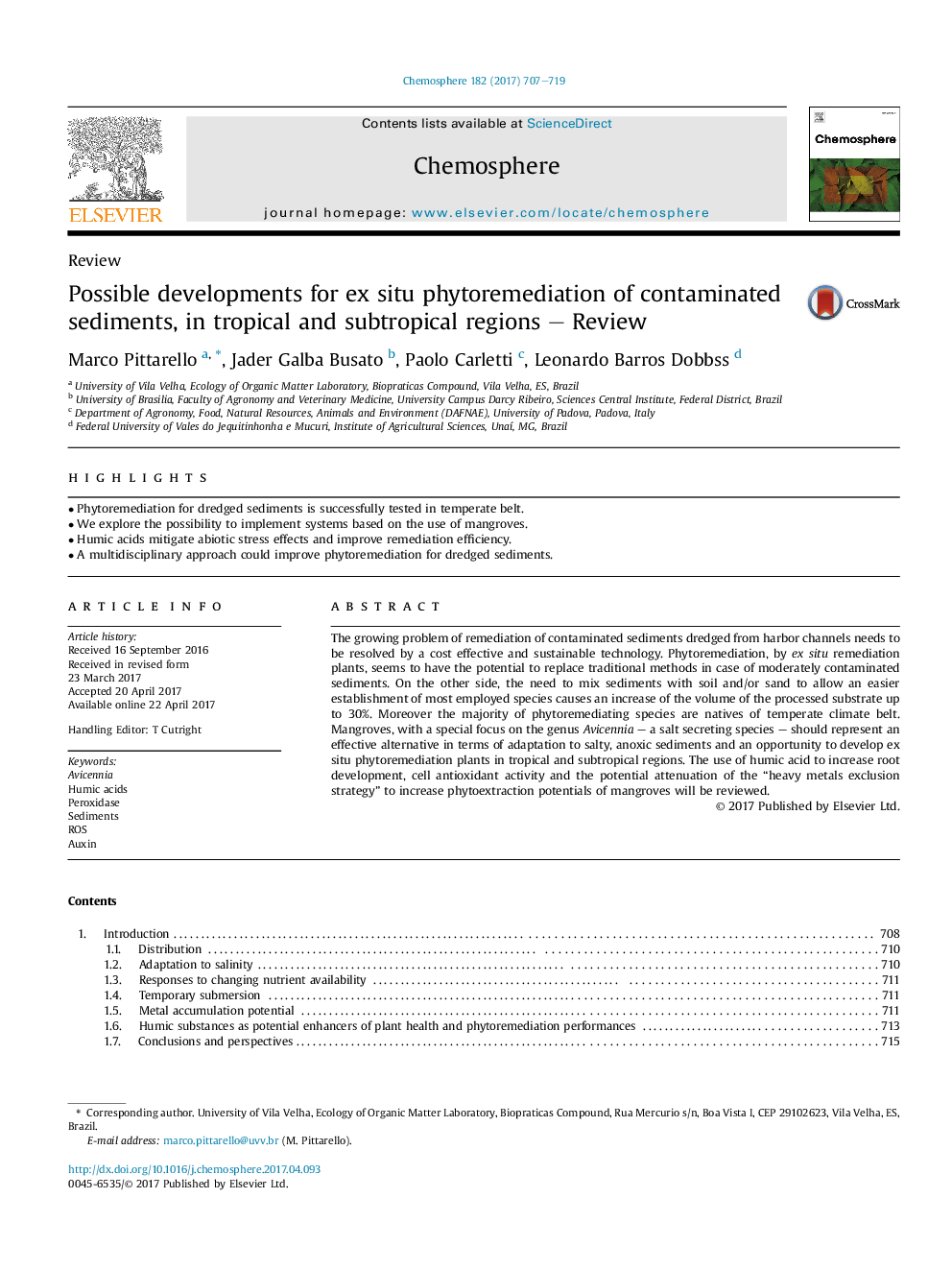| کد مقاله | کد نشریه | سال انتشار | مقاله انگلیسی | نسخه تمام متن |
|---|---|---|---|---|
| 5746963 | 1618789 | 2017 | 13 صفحه PDF | دانلود رایگان |
- Phytoremediation for dredged sediments is successfully tested in temperate belt.
- We explore the possibility to implement systems based on the use of mangroves.
- Humic acids mitigate abiotic stress effects and improve remediation efficiency.
- A multidisciplinary approach could improve phytoremediation for dredged sediments.
The growing problem of remediation of contaminated sediments dredged from harbor channels needs to be resolved by a cost effective and sustainable technology. Phytoremediation, by ex situ remediation plants, seems to have the potential to replace traditional methods in case of moderately contaminated sediments. On the other side, the need to mix sediments with soil and/or sand to allow an easier establishment of most employed species causes an increase of the volume of the processed substrate up to 30%. Moreover the majority of phytoremediating species are natives of temperate climate belt. Mangroves, with a special focus on the genus Avicennia - a salt secreting species - should represent an effective alternative in terms of adaptation to salty, anoxic sediments and an opportunity to develop ex situ phytoremediation plants in tropical and subtropical regions. The use of humic acid to increase root development, cell antioxidant activity and the potential attenuation of the “heavy metals exclusion strategy” to increase phytoextraction potentials of mangroves will be reviewed.
Journal: Chemosphere - Volume 182, September 2017, Pages 707-719
